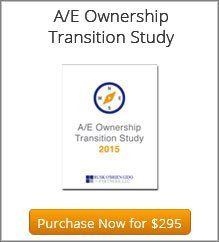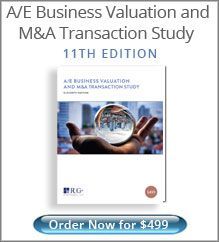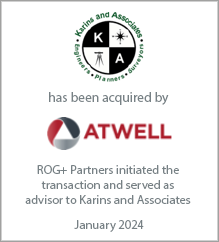Ian has spent the past twenty years working with hundreds of architecture, engineering and environmental consulting firms large and small throughout the U.S. and abroad with a focus on ownership planning, business valuation, ESOP advisory services, mergers & acquisitions, and strategic planning. Ian is a professionally trained and accredited business appraiser and holds the Accredited Senior Appraiser (ASA) designation with the American Society of Appraisers and is a certified merger & acquisition advisor (CM&AA) with the Alliance of Merger & Acquisition Advisors.
Is it time for a shareholders agreement tune-up?
Is it time for a shareholders agreement tune-up?
September 5, 2018
A well-crafted shareholders agreement is the foundation of any professional service firm’s ownership transition plan. In privately held firms (which make up the vast majority of firms in the A/E industry) this is the document that governs how ownership is transacted by and between the company and its shareholders. A good agreement will speak to virtually any circumstance that may arise, and specify the obligations of the company and shareholders in each circumstance with respect to ownership.
With over 20 years of ownership planning consulting work we’ve seen great examples of shareholders agreements, and some poor ones. The best examples have been thoughtfully crafted by an experienced attorney from the start, and regularly revisited and amended to remain relevant in the ever-changing tax and legal environment.
Based on that experience, below are some core elements that all agreements should include, or at least consider.
Events triggering stock redemption: One of the primary goals of a shareholders agreement in a professional service firm is to ensure that the company’s stock remains in the hands of employees. Therefore a good shareholder’s agreement will mandate the redemption of stock from a shareholder (or his or her estate) in the case of death, disability, marital dissolution, bankruptcy, termination of employment and other events that might otherwise cause shares to fall outside of the control of the company and its active employees. It might also cover events such as a shareholder’s loss of professional license, or other events that might limit the contributions of a shareholder to the company.
Stock valuation: A privately held firm must have some method of establishing its value for transactional purposes. This method should be clearly defined in the shareholders agreement. Some firms will simply mandate that a valuation analysis be conducted annually or as needed by an independent professional appraiser. Other firms employ a stock valuation formula, which is carefully defined in the agreement, often with a sample illustrating the application of the formula.
For companies that have a policy of carrying life insurance on key employees, the stock valuation language should be very specific as to how the cash proceeds from such policies will be accounted for in the valuation, and how the proceeds will be applied in the repurchase of the deceased shareholder’s stock.
Financing provisions: In order to protect the cash flow and solvency of the company, a good shareholders agreement will contain provisions that allow stock redemptions to be financed with notes payable to the selling shareholders. Financing terms are often as long as eight years, with the company having the discretion to decide whether or not to use financing, and if so, how long the term should be.
Non-solicitation and/or non-compete covenants: Non-compete agreements can be controversial, and their enforceability depends greatly on how restrictive they are and the governing jurisdiction. That said, the departure of a major shareholder (pre-retirement) has the potential to be very damaging to the company and its remaining shareholders, particularly when the company has a major financial obligation to the separated shareholder. It is therefore reasonable to include language in your shareholders agreement that restricts a separated shareholder from actively soliciting clients and employees.
Tag-along / drag-along rights: The rights of minority interest shareholders in a merger or acquisition scenario is an important one to address in your shareholders agreement. In the event that a majority of the shareholders decide to sell or merge the company with an outside entity, tag-along / drag-along rights give minority shareholders the right to require that their shares be treated in the same way as those of the controlling interest shareholders (i.e. they may “tag-along”). Conversely, this provision allows controlling interest shareholders to require the minority interest shareholders to participate in the transaction (i.e. they may be “dragged along”).
Mandatory redemption provisions: This is another sensitive topic, but a trending one. More and more companies are choosing to include language in their agreements requiring shareholders to begin to divest of their shares as they near retirement. Such provisions should not be confused with mandatory retirements. The goal of the provision is to allow companies to project and plan for future stock redemption liabilities by removing the uncertainty surrounding when a shareholder may choose to retire. As an example, an agreement might mandate that a shareholder begin divesting of their stock at the rate of 1/5th each year beginning at age 60, causing the shareholder to be fully divested by age 65.
Once again, the above topics are not meant to be a comprehensive list of every provision to include in your shareholders agreement, but they should provide some food for thought. If you’ve not reviewed your own shareholders agreement in some time, you might be overdue or a tune-up.
With over 20 years of ownership planning consulting work we’ve seen great examples of shareholders agreements, and some poor ones. The best examples have been thoughtfully crafted by an experienced attorney from the start, and regularly revisited and amended to remain relevant in the ever-changing tax and legal environment.
Based on that experience, below are some core elements that all agreements should include, or at least consider.
Events triggering stock redemption: One of the primary goals of a shareholders agreement in a professional service firm is to ensure that the company’s stock remains in the hands of employees. Therefore a good shareholder’s agreement will mandate the redemption of stock from a shareholder (or his or her estate) in the case of death, disability, marital dissolution, bankruptcy, termination of employment and other events that might otherwise cause shares to fall outside of the control of the company and its active employees. It might also cover events such as a shareholder’s loss of professional license, or other events that might limit the contributions of a shareholder to the company.
Stock valuation: A privately held firm must have some method of establishing its value for transactional purposes. This method should be clearly defined in the shareholders agreement. Some firms will simply mandate that a valuation analysis be conducted annually or as needed by an independent professional appraiser. Other firms employ a stock valuation formula, which is carefully defined in the agreement, often with a sample illustrating the application of the formula.
For companies that have a policy of carrying life insurance on key employees, the stock valuation language should be very specific as to how the cash proceeds from such policies will be accounted for in the valuation, and how the proceeds will be applied in the repurchase of the deceased shareholder’s stock.
Financing provisions: In order to protect the cash flow and solvency of the company, a good shareholders agreement will contain provisions that allow stock redemptions to be financed with notes payable to the selling shareholders. Financing terms are often as long as eight years, with the company having the discretion to decide whether or not to use financing, and if so, how long the term should be.
Non-solicitation and/or non-compete covenants: Non-compete agreements can be controversial, and their enforceability depends greatly on how restrictive they are and the governing jurisdiction. That said, the departure of a major shareholder (pre-retirement) has the potential to be very damaging to the company and its remaining shareholders, particularly when the company has a major financial obligation to the separated shareholder. It is therefore reasonable to include language in your shareholders agreement that restricts a separated shareholder from actively soliciting clients and employees.
Tag-along / drag-along rights: The rights of minority interest shareholders in a merger or acquisition scenario is an important one to address in your shareholders agreement. In the event that a majority of the shareholders decide to sell or merge the company with an outside entity, tag-along / drag-along rights give minority shareholders the right to require that their shares be treated in the same way as those of the controlling interest shareholders (i.e. they may “tag-along”). Conversely, this provision allows controlling interest shareholders to require the minority interest shareholders to participate in the transaction (i.e. they may be “dragged along”).
Mandatory redemption provisions: This is another sensitive topic, but a trending one. More and more companies are choosing to include language in their agreements requiring shareholders to begin to divest of their shares as they near retirement. Such provisions should not be confused with mandatory retirements. The goal of the provision is to allow companies to project and plan for future stock redemption liabilities by removing the uncertainty surrounding when a shareholder may choose to retire. As an example, an agreement might mandate that a shareholder begin divesting of their stock at the rate of 1/5th each year beginning at age 60, causing the shareholder to be fully divested by age 65.
Once again, the above topics are not meant to be a comprehensive list of every provision to include in your shareholders agreement, but they should provide some food for thought. If you’ve not reviewed your own shareholders agreement in some time, you might be overdue or a tune-up.
Latest Perspective
Perfecting the A/E Exit Strategy – Five Key Factors
An enormous A/E generation that kicked off their careers in the 1980s and subsequently started firms or became owners in the 1990s ...
© 2024
Rusk O'Brien Gido + Partners, LLC
Financial Experts for Architects, Engineers, and Environmental Consulting Firms









